Loxahatchee National Wildlife Reserve – Canoeing with Alligators
Taking a canoe trip into the everglades at Loxahatchee National Wildlife Reserve during alligator mating season is not the brightest of ideas. Here’s why.
I have loved the everglades since I first visited them over forty years ago. I have into hiked them at Flamingo, taken a National Park tour boat in Chokoloskee and even ridden into them by bike at Shark Valley, but until today I have never canoed in the everglades. When I refer to the everglades I’m talking about the sea of grass that used to extend from the Kissimmee River and the Kissimmee Prairie all the way to Florida Bay. I’m not talking about the mangrove swamps that line the coast in places from Pine Island all the way around to Biscayne Bay. This is a completely different ecosystem, and one that I also love and have canoed and kayaked many times. The main difference between the two is that the everglades are fresh water and the mangrove swamps mostly salt water.
Is this a difference without a distinction? No, because you only get alligators in fresh water and today I was looking for alligators.
Loxahatchee National Wildlife Reserve is located north west of Fort Lauderdale and preserves 145,800 acres of the northernmost existing part of the everglades. It is a place I have been meaning to get to for years and today’s the day. Loxahatchee has a 5.5 mile canoe trail that heads straight into the everglades and offers an opportunity to see the wildlife of this wonderful place, up close and personal – no guided tour, no large boat, no fence between us and the gators. It was going to be just Alison and I canoeing alone.
Loxahatchee Canoeing Inc. has canoes available at the launch site for the canoe trail, but use the website phone number to reserve one in advance.
Getting to Loxahatchee is a lesson in the stark difference between modern Florida and what is must have been like many years ago. We drove up I-95 to the Boynton Beach exit from Fort Lauderdale and on the way a very weird looking military vehicle with flashing lights and a turret like a tank passed us. It had S.W.A.T. written on it and was immediately followed by at least ten Suburbans or Tahoes with their flashers going. So it is just like in the movies – a completely unneeded bunch of police vehicles follow the first vehicle aimlessly. Just what do the guys in the 7th, 8th, 9th and 10th cars think they are going to add to the situation? I know if I was a crook bent on mayhem I would create a diversion to get all the idiots to rush away from the scene of my projected crime. Anyway, this is modern Florida.
Turning left at the Boynton Beach Boulevard exit I drove for seven miles through one identical suburban development after another until reaching Route 441 and suddenly on the other side of that road development ends and the everglades are allowed to begin. It is like Route 441 is the demilitarized zone in a war between man and nature. From 441 it is only a mile or so to the entrance to the NWR. There is a $10.00 entry fee. We stopped first at the refuge headquarters which was staffed by two volunteers who had to be close to eighty. I suspect they like doing this because of the snazzy white Loxahatchee NWR uniforms they get to wear. The exhibits at the interpretive center were very good, particularly one on the sounds of the everglades at night. The canoe launch site is about another half mile along.
We had arranged for canoes by telephone the night before and I was surprised to see the owner on site as she said she wouldn’t be, but her presence was useful in getting us launched. The canoe trail starts directly across a canal from the launch site.
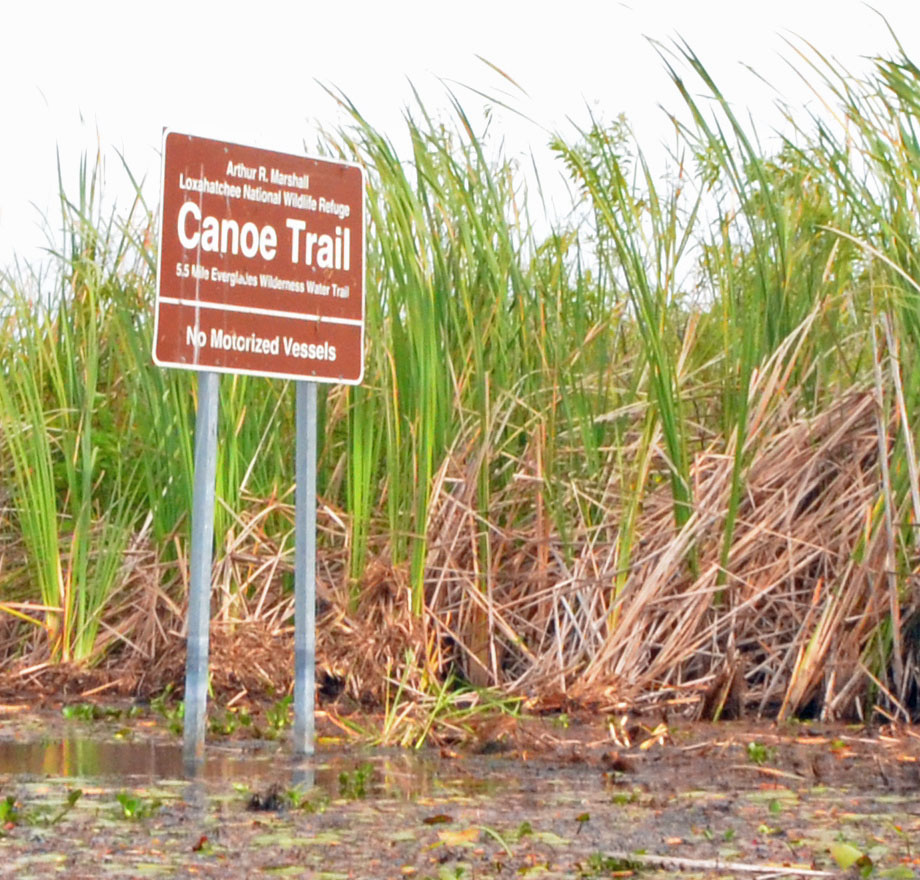
We were provided with a plasticized map which showed a loop trail with a number of interpretive signs and one platform where we could stop. The estimated time was three to five hours. Supplies included a cooler with water, Gatorade, a Cuban sandwich for me and left over shawarma for Alison. We also had bug dope, sunscreen, a cell phone and of course the trusty Nikon.
I don’t know what I was expecting, but it definitely wasn’t what we experienced. I have seen alligators hundreds of times before. Usually they are just sunning themselves on a bank or looking up from the water with only their eyes and nostrils exposed, but seldom do you ever see them actually swimming. Well today changed all that.
The canoe trail started out between high bullrushes which meant there was a lot of phosphorus in the water.
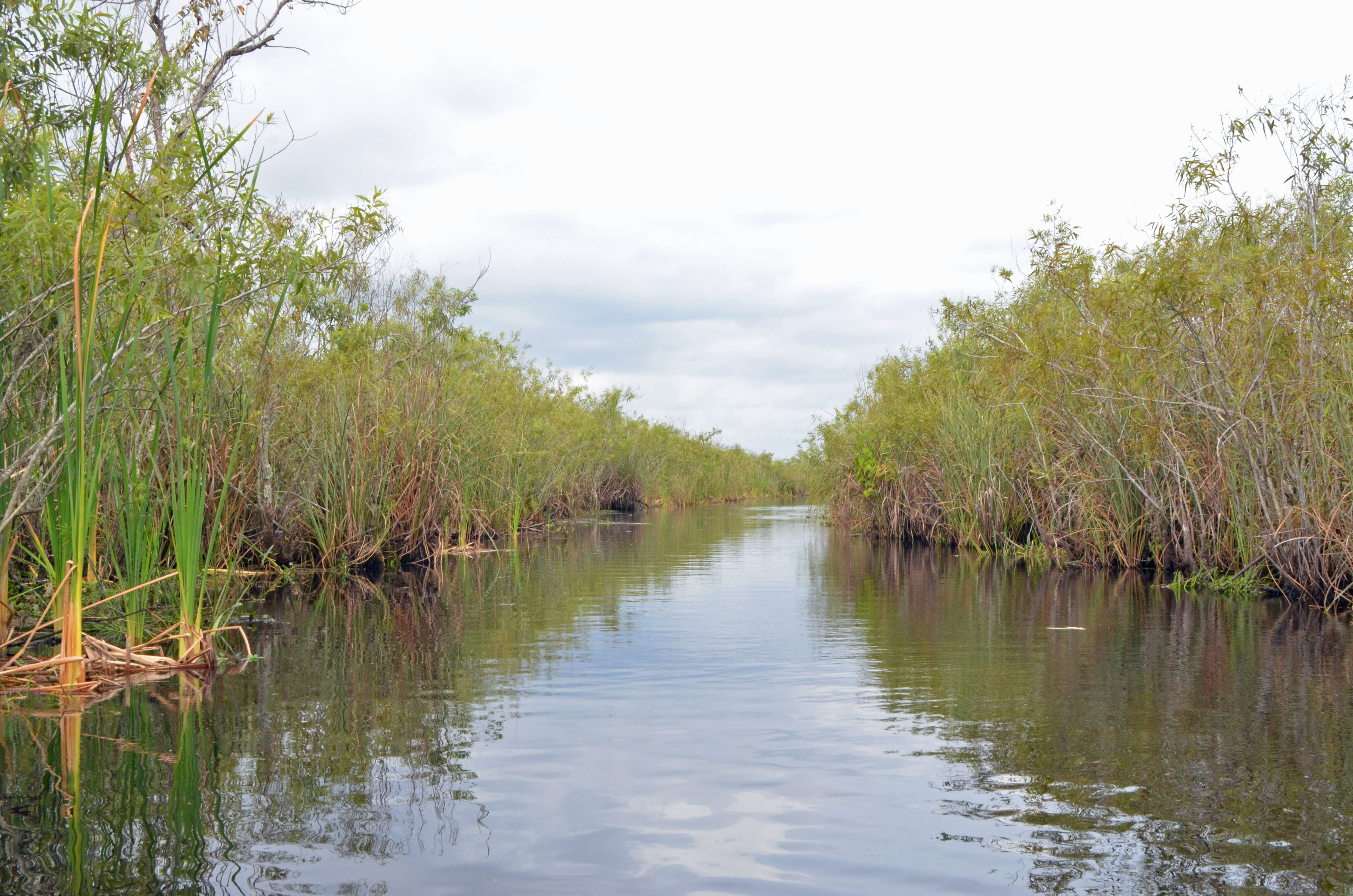
Bullrushes are great at absorbing the phosphorus that gets into the water as fertilizer used by the sugar industry which still has hundreds of thousands of acres under heavily subsidized production just north of the everglades. If I get started on the Florida sugar industry I’ll start ranting and get off topic, so forget I mentioned it. The bottom line is that the bullrushes are not the everglades. This is what the real everglades look like at Loxahatchee. It is a sea of grass growing amidst a huge river – a river you don’t really know is there.
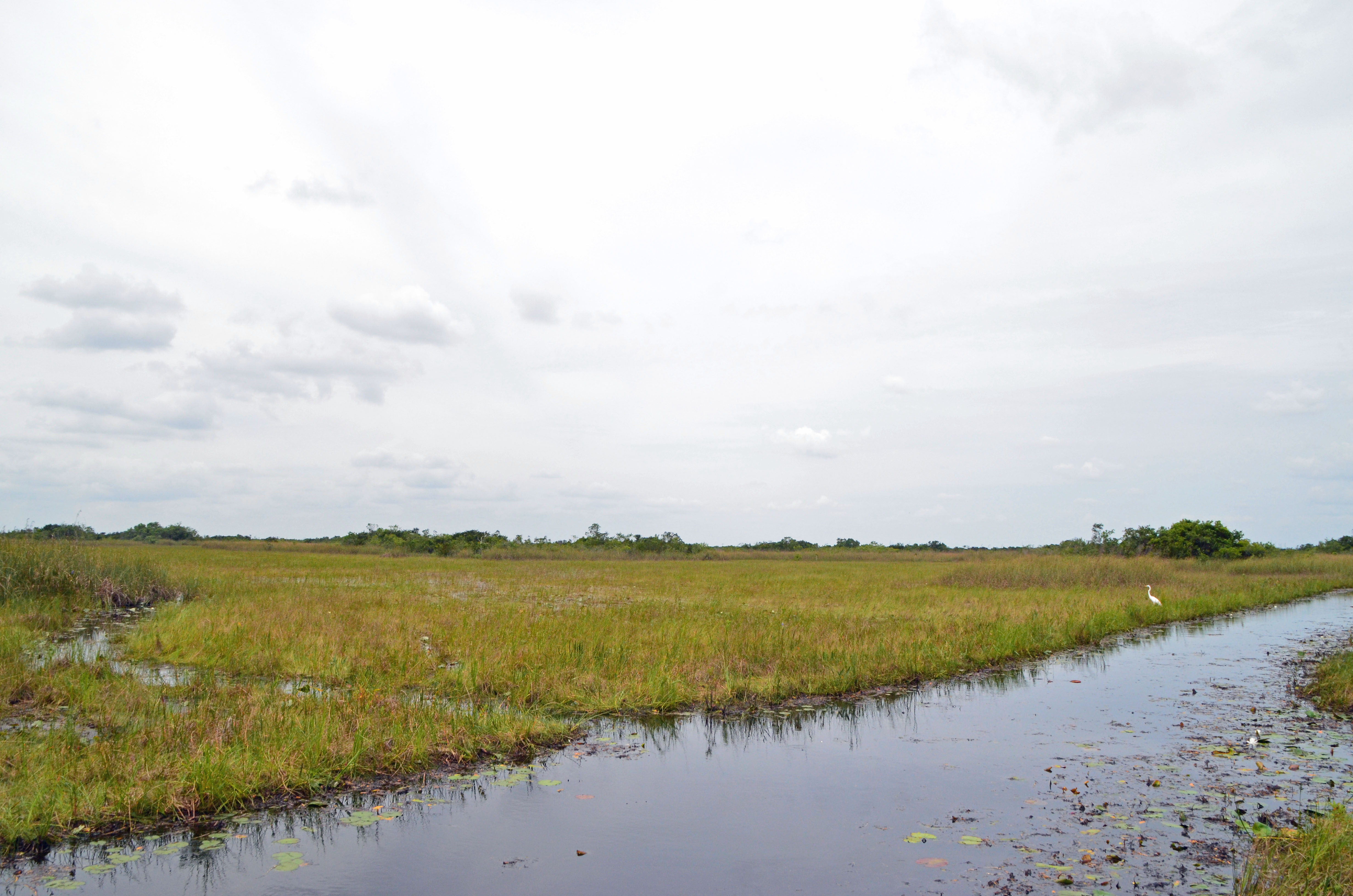
The desecration of the everglades is certainly not a new story and the reality is some parts of that story are having a happy (I won’t say ending because the story is far from over) turn of events. The slaughter of the magnificent birds of the everglades for their plumes for use in lady’s hats must surely be one of the most depraved moments in man’s modern history, but within minutes of canoeing today I knew they were back in force. We saw great egrets, snowy egrets, great blue herons, little blue herons, night herons (in numbers larger than I have ever seen), limpkins, glossy ibis, white ibis and wood storks, all of which were shot for their feathers and many that were close to extinction. Here are a few photos of some of the birds we saw today.
Anhigas or snake birds need to dry their wings like cormorants in able to be able to fly after diving to catch fish.
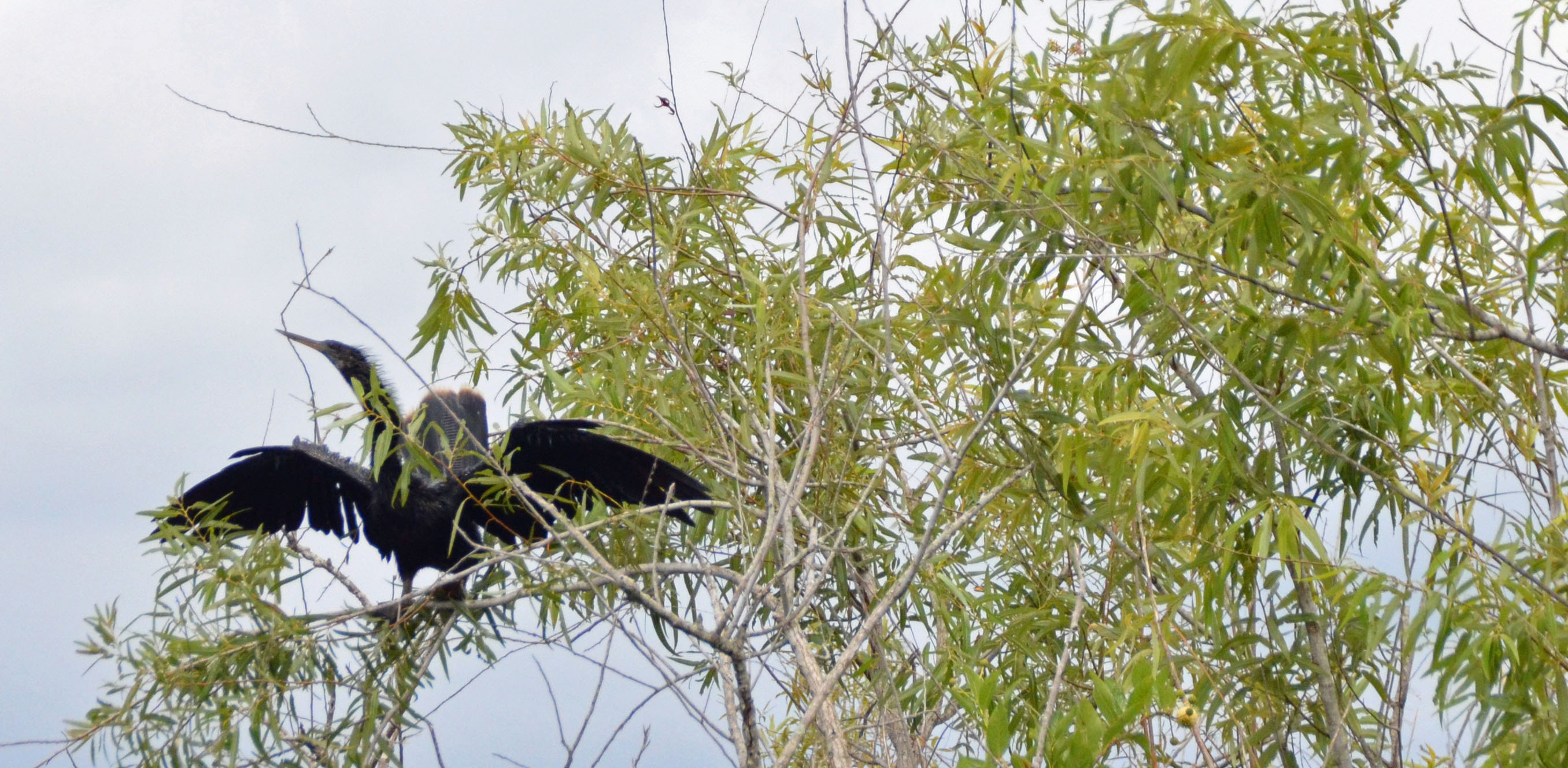
Wood storks are the only stork in North America and at one time numbered less than a few hundred birds in the United States. Now there are 4000-6000 breeding pairs.
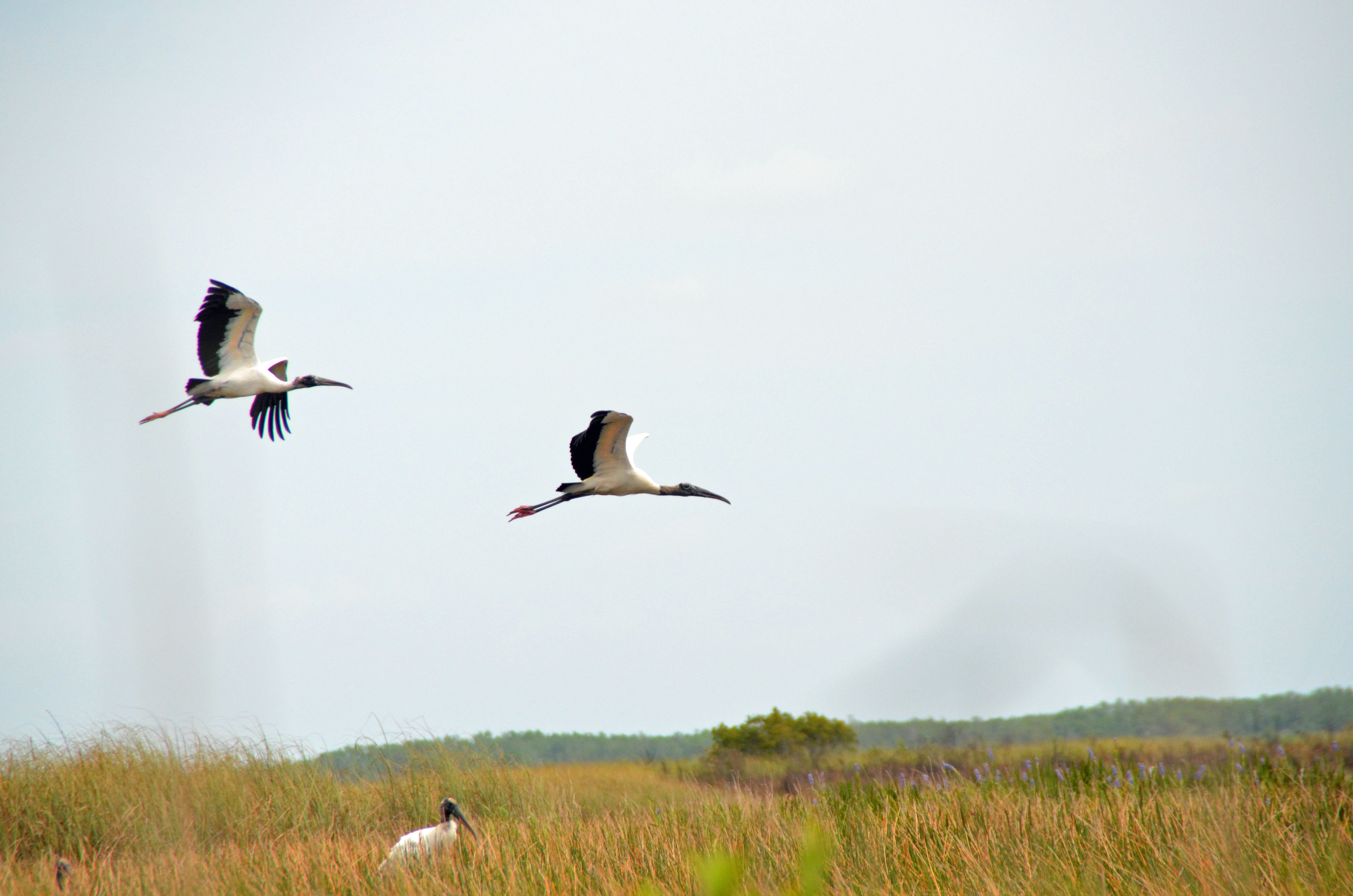
Great Blue Herons are found around the world, but I’ve never seen bigger ones than we saw today. This one was very well camouflaged until he took flight.
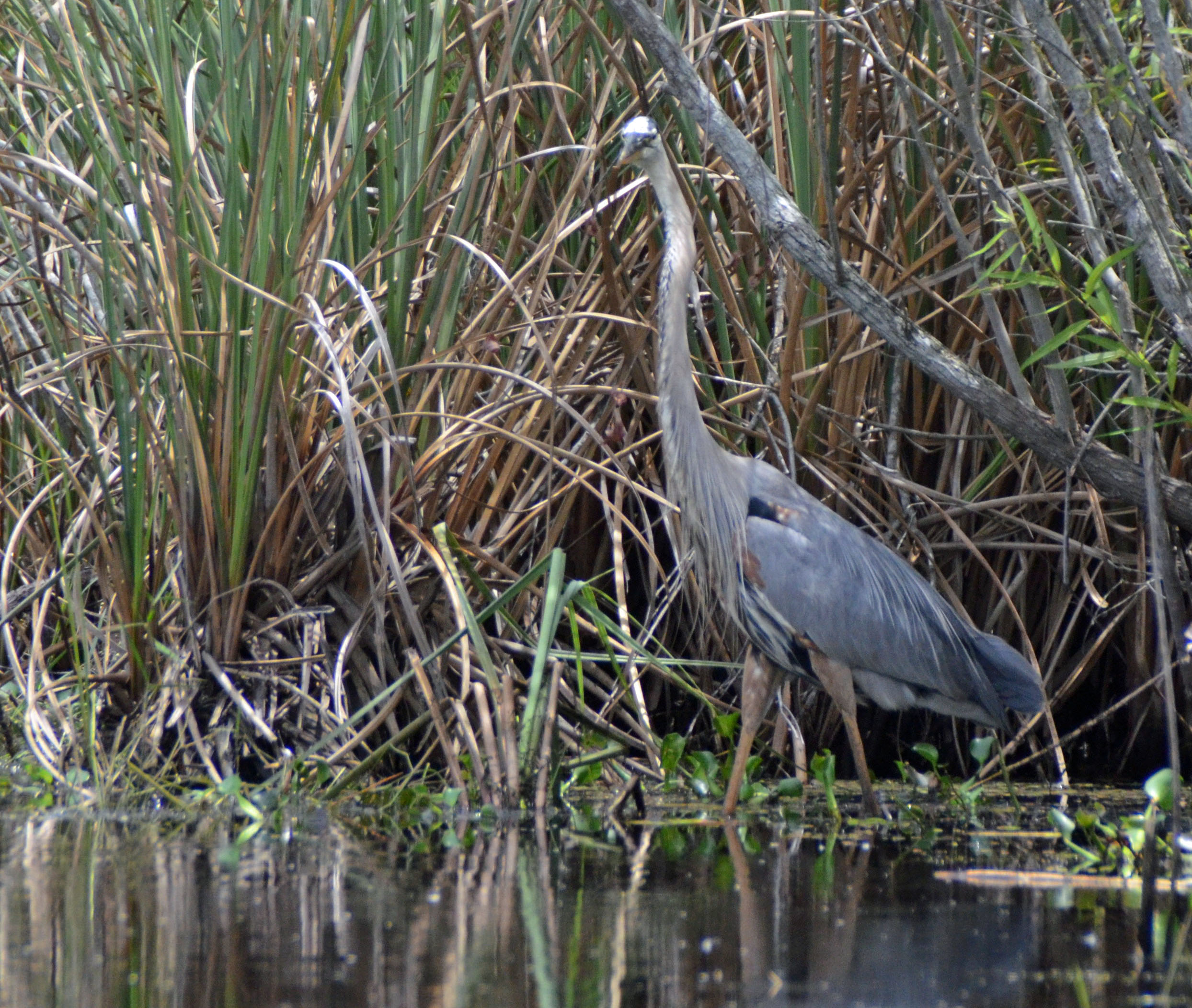
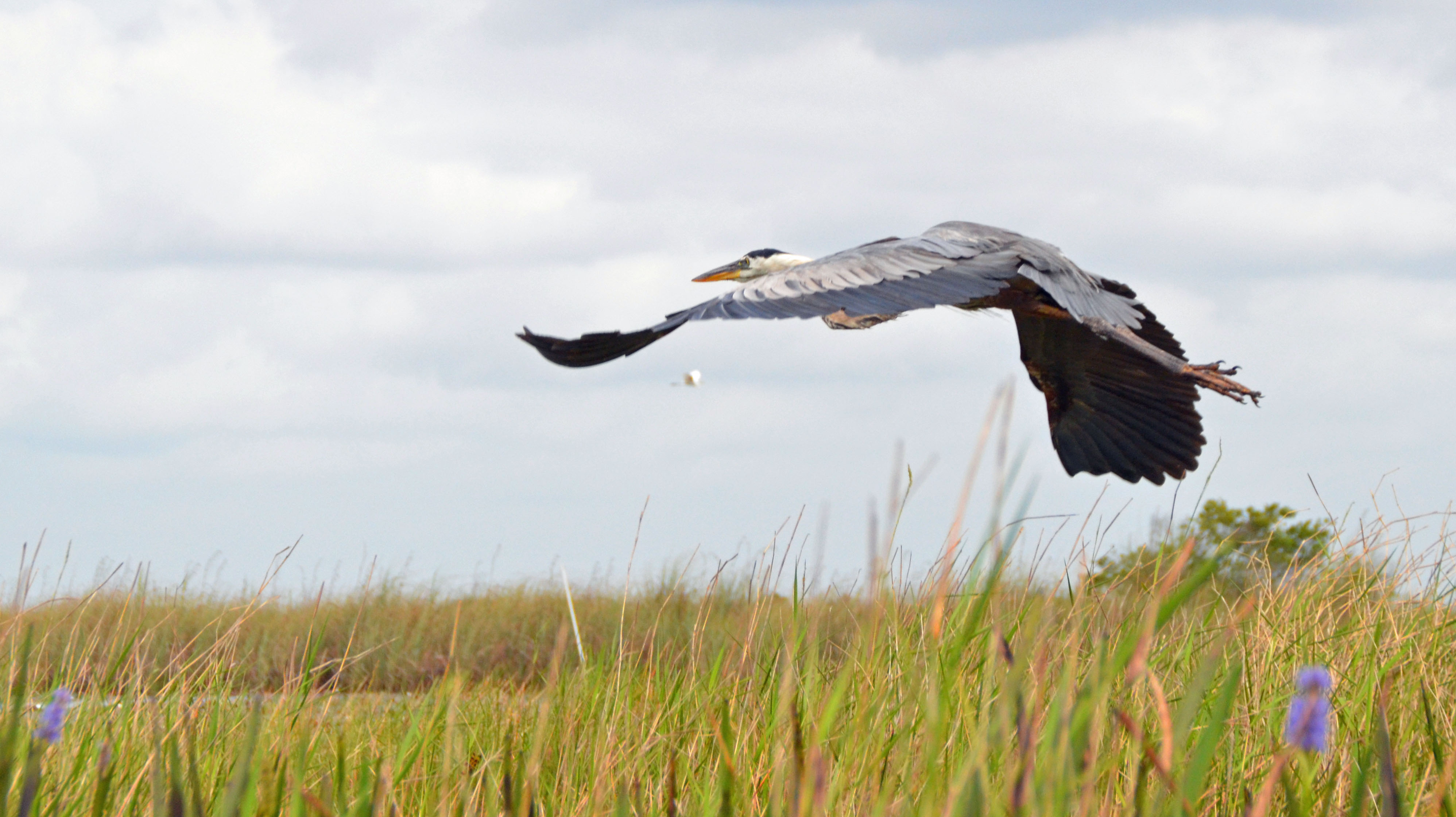
Aside from the wading birds we saw osprey, black and turkey vultures, boat-tailed grackles, red-winged blackbirds, mottled ducks and lots of moorhens. The one thing almost all these birds do that can creep you out is to suddenly fly up into the air after making a horrible screeching sound. The heron family is particularly adept at this trick and pulled it off repeatedly today.
In addition to the bird life the everglades is home to a lot of rare orchids, of which we saw none, and waterlilies of which we saw lots.
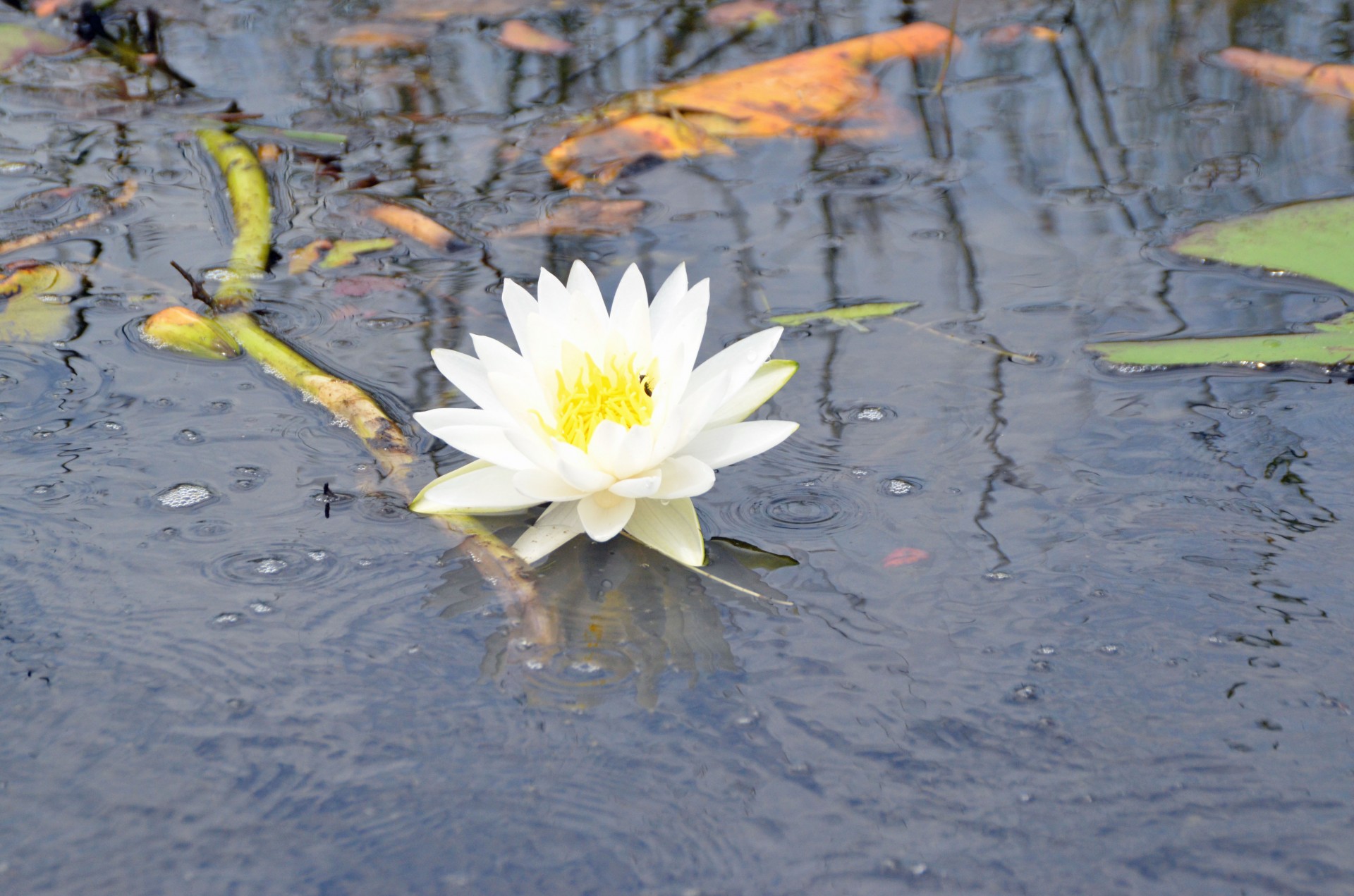
Alligators are so cute when they are little. We saw quite a few today.

OK, but what about the real deal – the big ones? Well I can tell you that they exist in Loxahatchee in numbers greater than I have seen anywhere. Oh, and did I mention that the end of April and early May is their mating season? Here’s a story from a few years ago about why you need to avoid alligators in May. Seems like the nice lady who rented us the canoe forgot to mention that.
From the first five minutes we were on the trail there was a persistent roar of alligators, and believe me they do roar. Lions have nothing on them. They also grunt, hiss and make disgusting noises I can’t begin to describe. If I had brought along a tape recorder I probably could have sold the soundtrack to a horror movie studio or one of those midway fun houses.
Although the noises were disturbing to say the least, we hadn’t seen any large gators so I convinced Alison to push on deeper into this heart of darkness. Then we saw a huge gator swimming casually up the middle of the canoe trail with his tail sashaying back and forth, obviously on the make. Somehow I convinced Alison to keep on paddling and we started to gain on him.
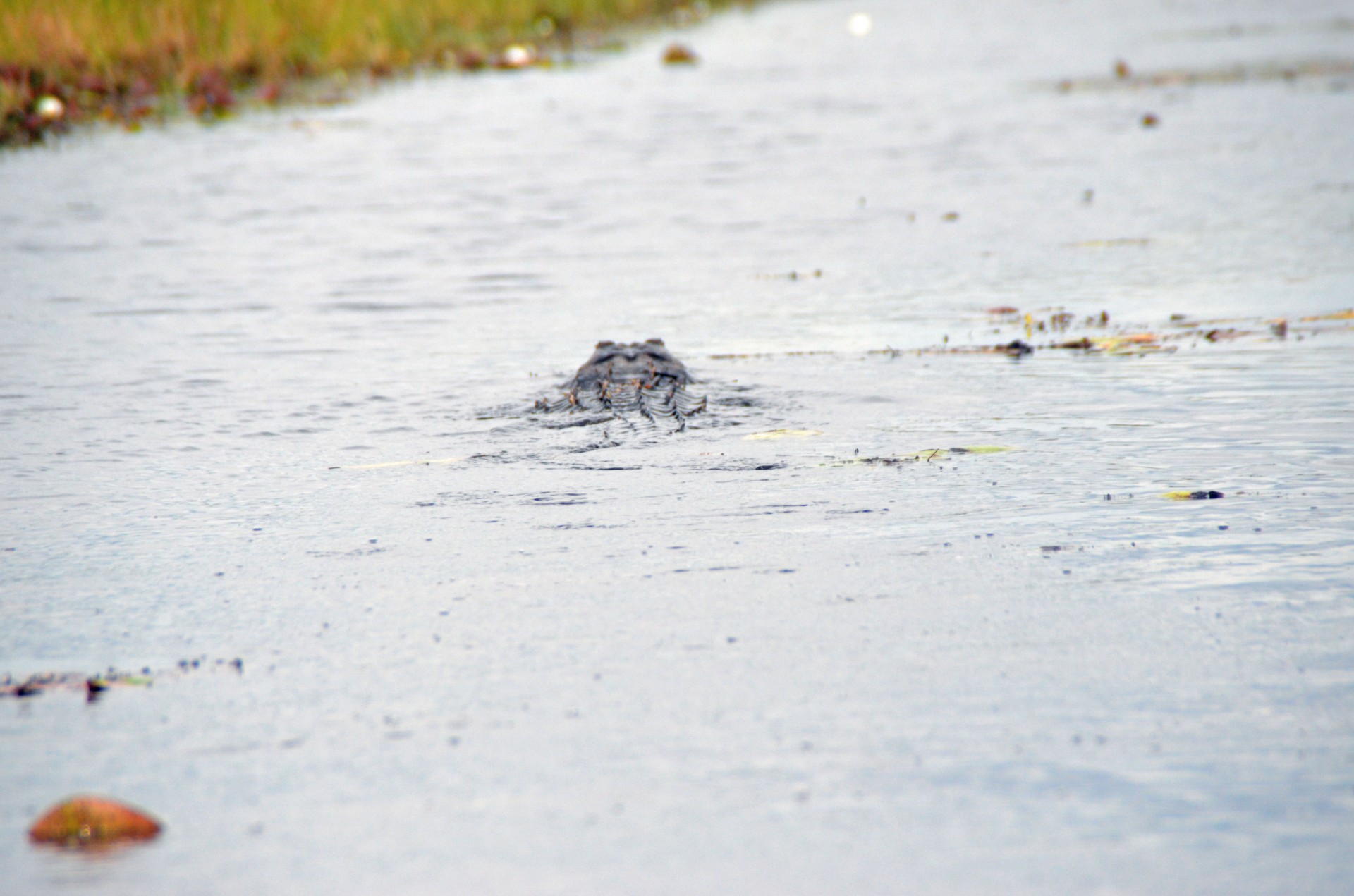
He was so intent on finding a lover that he didn’t seem to notice us getting closer.
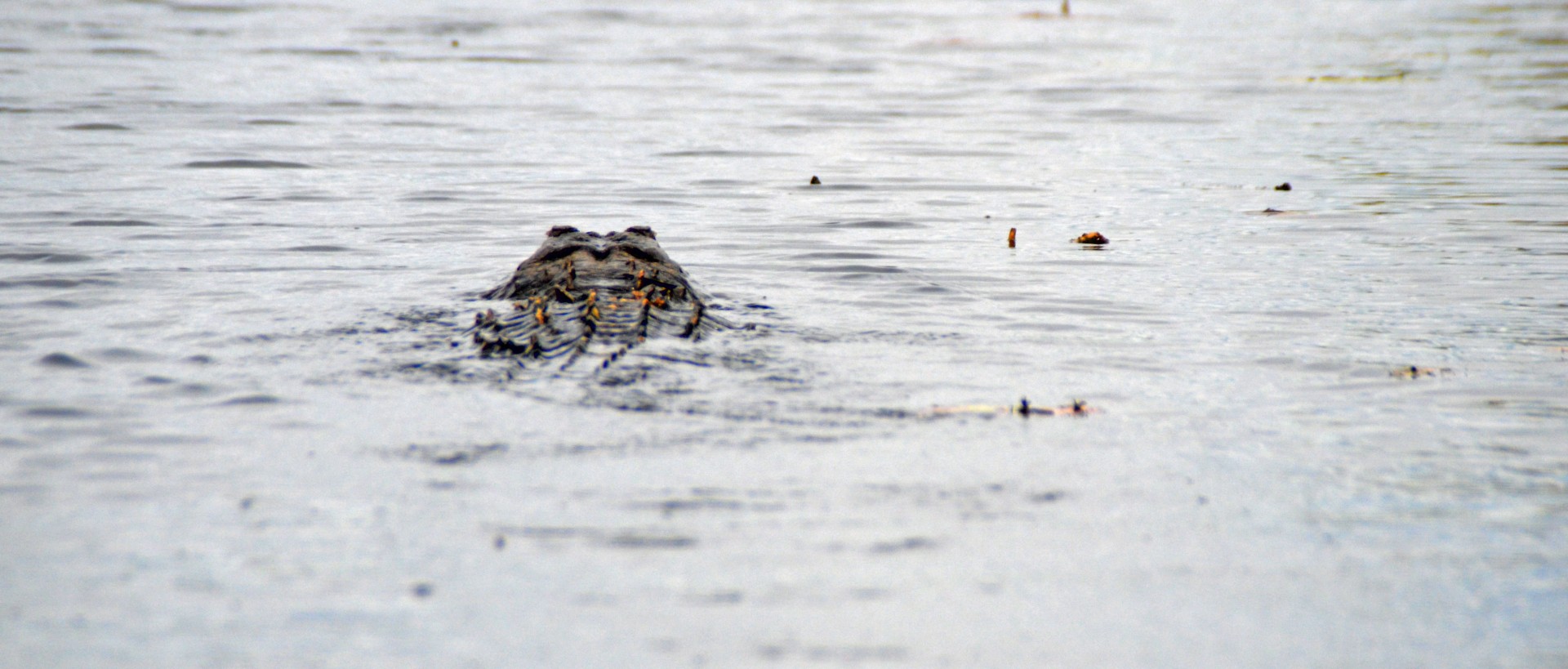
By now we had a decision to make – did we try to pass this guy or turn back? To her credit Alison, who was in front and probably would be the first one attacked, listened to my exhortations of, “He’s not that big.” and kept on paddling while I got this shot.
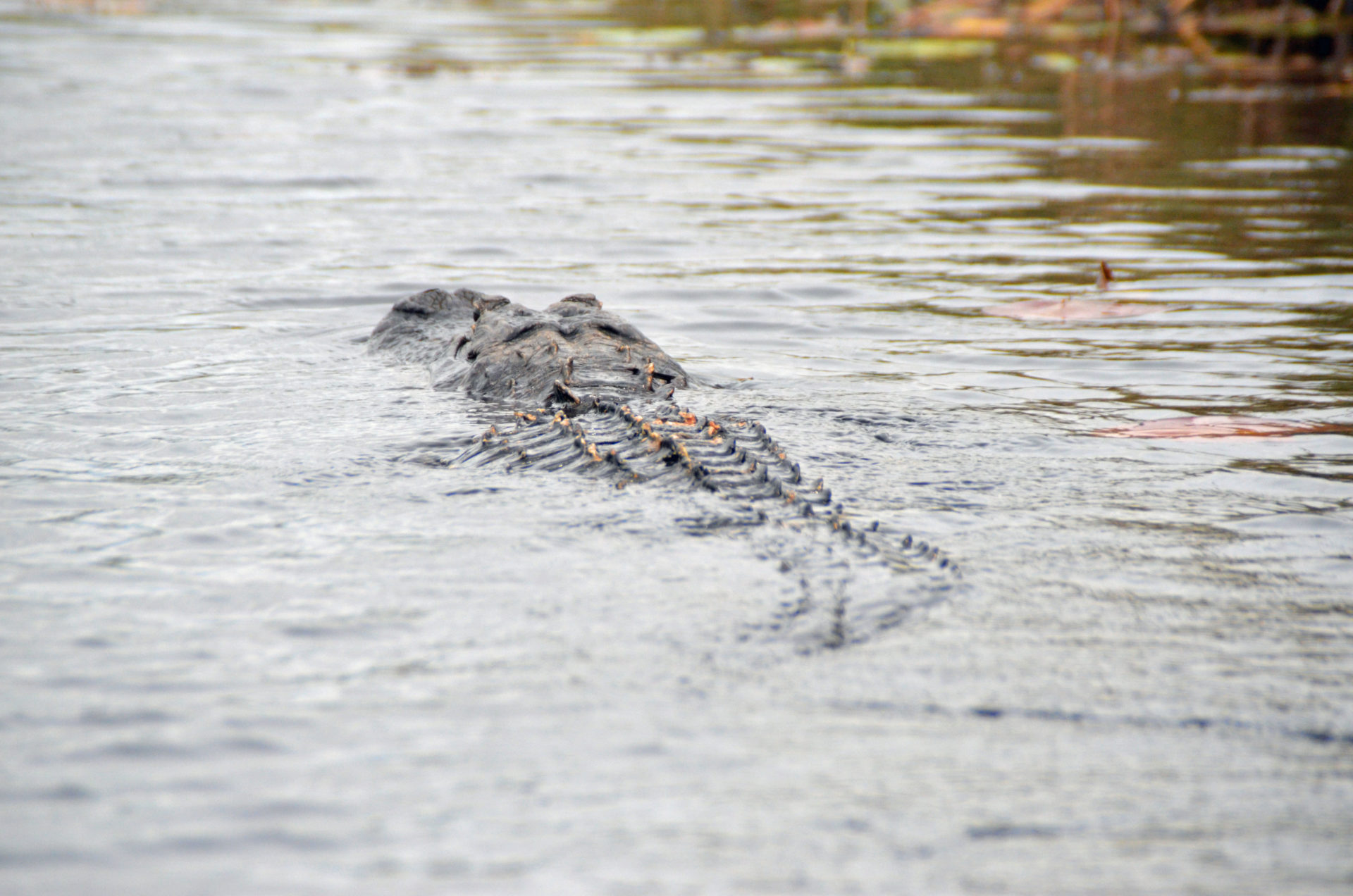
A few seconds later we drew even and I put the camera down and we paddled like hell to get by him. He never blinked. I’m not sure of the wisdom of chasing down horny alligators, but we did it three more times this morning and most of the time, like in a game of chicken, the gator dove before we got up to him. Only this first big boy was too cocksure not to bother.
At one point we came upon two alligators together who looked really pissed off at us, if alligators can have that expression. Shortly after we passed them I witnessed them in flagrante delicto so I guess we had forestalled their love affair. A little later we came upon the corpse of a four foot alligator lying belly up in the channel. I wondered what could possibly kill an alligator this big, until it dawned on me – only a bigger alligator. On checking the internet later I learn that big males will kill smaller rivals at this time of year – not to eat them, alligators aren’t cannibals, just to remove them as potential threats of another sort. We all know older women covet younger men.
Writing this several hours later, I wonder if there will be a delayed reaction to the apparent danger we were in, but after a couple of beers I feel great. Alison not so much.
One last interesting thing on this trip to alligator loveland was that the fish were smart enough to get out of alligator’s way. One was so determined he actually jumped over the canoe hitting the camera which I had perched on the cooler along the way. Oh and a good hint if you decide you want to rush out and repeat this trip tomorrow – the bubbles mean trouble.
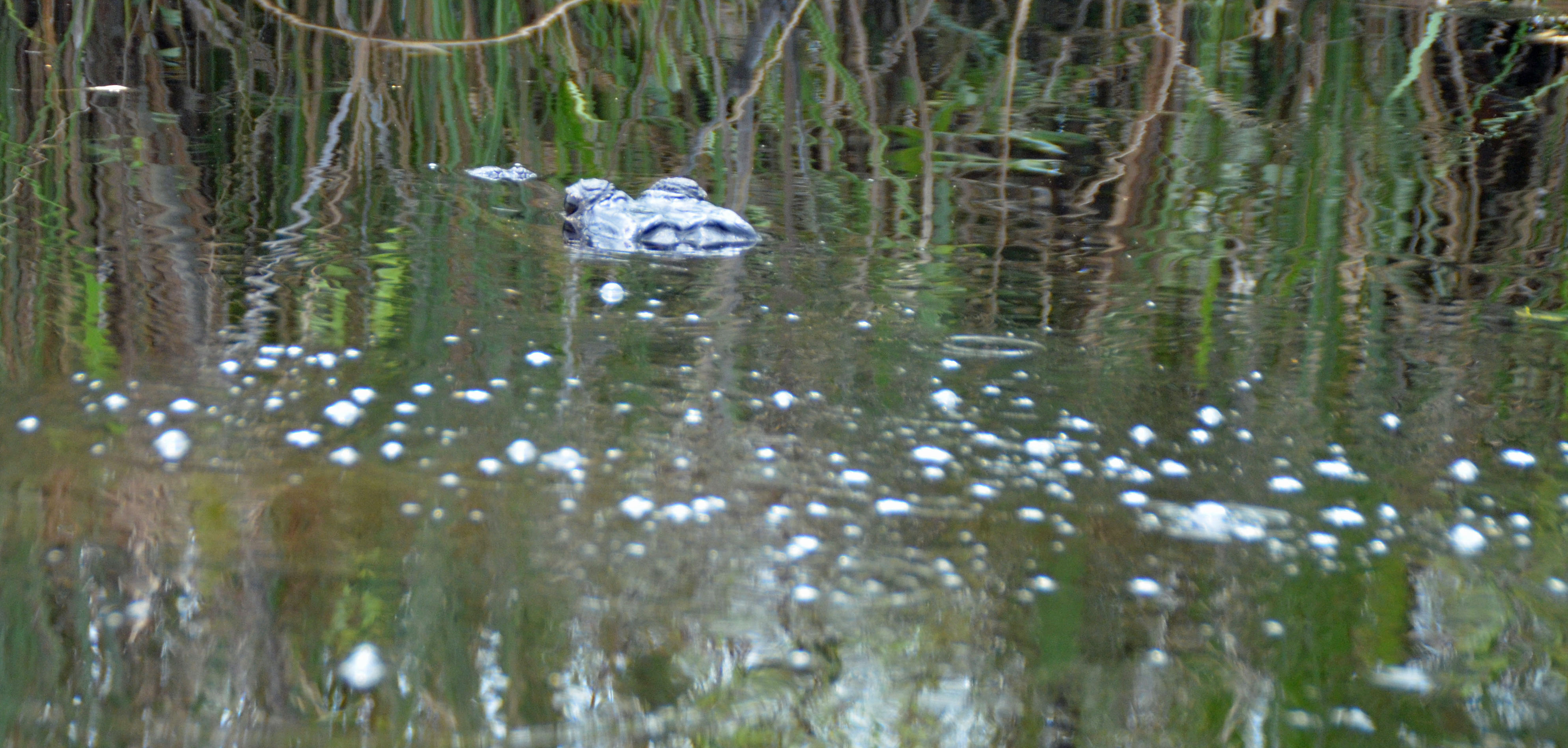
These are a sign that there is a gator just below and he could pop up at any time.
If you have no desire to see alligators close up in a canoe as we did at Loxahatchee, you can see them from the safety of a boardwalk at Corkscrew Sanctuary or Six Mile Cypress Slough in Fort Myers, although neither is an everglades experience.
For a less scary canoeing experience check out my post on three days of canoeing New Brunswick’s legendary Restigouche River.

